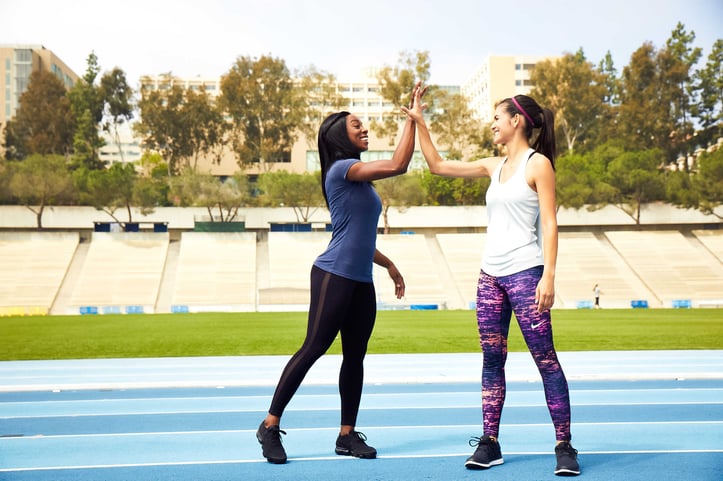Plank Perfect: Unlocking Core Strength with Optimal Elbow Position & Technique

Plank Perfect: Unlocking Core Strength with Optimal Elbow Position & Technique
Welcome, fitness enthusiasts! Whether you're just starting your fitness journey or looking to refine your existing routine, one exercise consistently stands out for its incredible core-strengthening benefits: the plank. But like any powerful tool, its effectiveness hinges on proper execution. Today, we're diving deep into the science and practical application of the plank, with a special focus on a seemingly small detail that makes a world of difference: your elbow position.
While many associate planks with a flat stomach, its true power lies in building foundational core strength, stability, and endurance. This, in turn, can support better posture, reduce injury risk, enhance athletic performance, and contribute to a more metabolically active physique – a crucial component of any long-term health and weight management strategy. Let's move beyond simply holding a static position and explore how to truly master the plank for maximum results.
As an NSCA-Certified Strength and Conditioning Specialist (CSCS), I've seen countless individuals perform planks, and I can tell you that a few key adjustments can transform it from a passive hold into a dynamic, full-body engager.
The Science Behind the Plank: More Than Just an Ab Exercise
The plank is an isometric exercise, meaning the muscles contract without an appreciable change in muscle length. Its effectiveness stems from several key physiological principles:
- Core Muscle Activation: The primary goal of the plank is to engage and strengthen the entire core musculature. This includes the rectus abdominis (the "six-pack" muscles), transverse abdominis (the deepest core muscle, crucial for spinal stability), obliques (side abdominal muscles), erector spinae (muscles along the spine), and even muscles in the hips and shoulders that act as stabilizers. According to the American Council on Exercise (ACE), a strong core is essential for transferring energy between the upper and lower body, improving balance, and stabilizing the spine during movement.
- Neuromuscular Control & Stability: Planks train your body to resist forces that would otherwise cause unwanted movement or instability in the spine. This neuromuscular control is vital for everyday activities and athletic endeavors. The better your brain can communicate with your core muscles to maintain a rigid torso, the more efficient and safer your movements become.
- Progressive Overload (Isometric Style): While you're not lifting more weight in a traditional sense, you can apply progressive overload to planks by increasing the duration of the hold, adding instability (e.g., lifting a limb), or progressing to more challenging variations. This continued challenge is essential for strength and endurance gains, a principle well-established in strength and conditioning.
- Energy System Engagement: While not a primary cardiovascular exercise, holding a plank, especially for longer durations or in challenging variations, primarily utilizes the anaerobic glycolysis system for shorter, intense efforts and eventually taps into aerobic metabolism for sustained holds. Building muscle through exercises like planks also increases your Resting Metabolic Rate (RMR), meaning you burn more calories at rest, which indirectly supports weight management goals.
Unique Insights: Beyond the Basic Plank Hold
While the standard plank is a fantastic starting point, let's explore some deeper insights often overlooked:
-
Insight 1: The "Active Plank" – It's Not a Passive Hold! Many people approach the plank as a test of how long they can simply not collapse. However, to truly maximize its benefits, you need to actively engage your muscles. Think of it as an "active plank." This involves:
- Squeezing your glutes: This helps stabilize the pelvis and prevent lower back sagging.
- Bracing your core: Imagine someone is about to gently push you from the side – your core should be tight and ready.
- Pulling your elbows towards your toes (isometrically): Even though they don't move, this creates tension through the lats and further engages the anterior core.
- Protraction of the Scapulae: Gently push your upper back towards the ceiling, spreading your shoulder blades. This engages the serratus anterior and prevents your chest from sagging. This active engagement turns the plank from a simple hold into a full-body tension exercise, dramatically increasing its effectiveness.
-
Insight 2: Plank Variations for Specific Goals & Addressing Imbalances The standard plank is great, but variations can target different aspects of core strength or address specific weaknesses. For instance:
- For Rotational Stability (Anti-Rotation): Single-arm planks or planks with alternating shoulder taps challenge your ability to resist rotational forces, crucial for sports and daily life. This directly targets the obliques and transverse abdominis more intensely.
- For Posterior Chain Emphasis: Reverse planks (facing upwards, supported on elbows/hands and heels) place greater emphasis on the glutes, hamstrings, and lower back extensors.
- Addressing Lower Back Pain (with caution & medical clearance): For some individuals with a history of lower back pain (and after clearance from a healthcare professional), modified planks (e.g., on knees) or planks with a focus on minimal lumbar movement and maximal transverse abdominis engagement can be beneficial. The key is perfect form and avoiding any pain. A study published in the Journal of Strength and Conditioning Research (JSCR) often highlights the importance of core stability exercises in back health programs, such as "Core Stability Training for Injury Prevention" by Hibbs et al. (2008).
The Crucial Role of Elbow Position & Common Form Errors
Now, let's zero in on the elbows. Proper elbow placement is fundamental for safety, effectiveness, and comfort.
Optimal Elbow Placement:
- Directly Beneath the Shoulders: Your elbows should be stacked directly under your shoulder joints. This creates a stable base and allows for efficient force transfer.
- Forearms Parallel: Your forearms should be parallel to each other, like railroad tracks. Some prefer clasping hands, but for beginners, parallel forearms often promote better shoulder girdle stability and prevent internal rotation stress.
- Shoulder-Width Apart: Elbows should be approximately shoulder-width apart.
Common Elbow & Form Errors (and How to Fix Them):
-
Error: Elbows Too Far Forward
- Problem: This places excessive stress on the shoulder joints and deltoids, making the plank feel much harder than it needs to be and increasing injury risk. It also reduces core engagement as you're relying more on shoulder strength.
- Fix: Before lifting into the plank, ensure your elbows are directly under your shoulders. You might need to adjust your body position slightly once you're up.
-
Error: Elbows Too Wide
- Problem: Creates an unstable base and can lead to shoulder impingement or discomfort. Reduces the focus on the core.
- Fix: Actively think about keeping your elbows in line with your shoulders. Imagine drawing lines straight down from your shoulders to the floor.
-
Error: Sagging Hips / Lower Back Arching
- Problem: This is a classic plank mistake. It indicates insufficient core strength or fatigue and places significant strain on the lumbar spine. The transverse abdominis is not being properly engaged.
- Fix: Actively squeeze your glutes and brace your core as if you're about to be punched in the stomach. Think about drawing your belly button towards your spine. If you can't maintain this, shorten the hold duration or regress to a knee plank.
-
Error: Piking Hips (Hips Too High)
- Problem: While less stressful on the lower back than sagging, this reduces the load on the core muscles, making the exercise less effective. You're essentially making it easier.
- Fix: Focus on creating a straight line from your head to your heels. Engage your glutes and core to lower your hips into the correct alignment.
-
Error: Head Dropping or Looking Up
- Problem: Misaligns the cervical spine and can lead to neck strain.
- Fix: Keep your neck in a neutral position, an extension of your spine. Gaze down at the floor, slightly ahead of your hands.
Practical Application: Sample Plank Progression & Workout
Here’s a sample progression you can incorporate into your routine. Remember to prioritize form over duration. The National Strength and Conditioning Association (NSCA), in its Essentials of Strength Training and Conditioning, consistently emphasizes that quality of movement precedes quantity and is fundamental for long-term progress and injury prevention.
Phase 1: Foundational Stability (Weeks 1-4) Focus: Mastering basic form and building initial endurance.
- Knee Plank (Modified Plank):
- Sets: 3-4
- Hold: 20-45 seconds (or until form breaks)
- Rest: 60 seconds
- Frequency: 3 times per week
- Cue: Elbows under shoulders, core braced, straight line from head to knees.
- Standard Forearm Plank:
- Sets: 3-4
- Hold: 15-30 seconds (focus on perfect form)
- Rest: 60-90 seconds
- Frequency: 3 times per week
- Cue: Straight line head to heels, glutes squeezed, core tight.
Phase 2: Increasing Duration & Introducing Instability (Weeks 5-8) Focus: Building endurance in the standard plank and starting to challenge stability.
- Standard Forearm Plank:
- Sets: 3-4
- Hold: 30-60 seconds (or more, maintaining form)
- Rest: 60 seconds
- Frequency: 3 times per week
- Plank with Alternating Leg Lifts:
- Sets: 3
- Reps: 5-8 leg lifts per side (slow and controlled, minimize hip rotation)
- Rest: 60 seconds
- Frequency: 2-3 times per week
- Cue: Maintain plank integrity while lifting one leg a few inches off the ground.
Phase 3: Advanced Variations & Dynamic Planks (Weeks 9+) Focus: Challenging core strength and stability with more dynamic movements.
- Plank with Alternating Arm Lifts (Single-Arm Plank Prep):
- Sets: 3
- Reps: 5-8 arm lifts per side (reach forward, minimize torso rotation)
- Rest: 60-75 seconds
- Frequency: 2-3 times per week
- Plank Jacks:
- Sets: 3
- Reps: 15-20 reps (or 20-30 seconds of work)
- Rest: 60 seconds
- Frequency: 2 times per week
- Cue: Maintain a stable plank while jumping feet out and in, like a horizontal jumping jack.
- Side Plank (Both Sides):
- Sets: 3 per side
- Hold: 20-45 seconds
- Rest: 45-60 seconds
- Frequency: 2-3 times per week
- Cue: Elbow under shoulder, hips lifted, straight line from head to feet.
Important Considerations:
- Warm-up: Always perform a general warm-up before core training.
- Listen to your body: If you feel pain (especially sharp pain in the lower back or shoulders), stop the exercise and re-evaluate your form or consult a professional.
- Breathing: Don't hold your breath! Breathe steadily throughout the hold.
- Consistency is Key: Regular practice will yield the best results.
Fueling Your Core: Nutrition for Strength & Recovery
While this article focuses on the plank exercise, it's important to remember that a strong core is built in the kitchen as much as in the gym. General sports nutrition principles apply:
- Adequate Protein: Essential for muscle repair and growth. Aim for sources like lean meats, poultry, fish, eggs, dairy, legumes, and tofu.
- Complex Carbohydrates: Provide energy for your workouts. Choose whole grains, fruits, and vegetables.
- Healthy Fats: Important for hormone production and overall health. Sources include avocados, nuts, seeds, and olive oil.
- Hydration: Crucial for all bodily functions, including muscle performance and recovery.
Disclaimer: This is general nutritional advice. For personalized plans, consult a registered dietitian or sports nutritionist.
FAQ: Your Plank Questions Answered
Q1: How long should I be able to hold a plank?
- A: There's no magic number, as it depends on your fitness level and goals. For beginners, aiming for 20-30 seconds with perfect form is a great start. As you get stronger, you can increase the duration. However, focusing on active engagement and perfect form for shorter durations (e.g., multiple sets of 30-60 seconds) is often more beneficial than holding a sloppy plank for several minutes. Quality over quantity!
Q2: My wrists hurt when I do a high plank (on hands). What can I do?
- A: Wrist pain is common if you have limited wrist mobility or if you're not distributing your weight correctly. Try these:
- Switch to a forearm plank (on elbows) – this is the focus of our article and is generally more comfortable for wrists.
- Ensure your hands are directly under your shoulders and your fingers are spread wide to distribute pressure.
- Perform wrist mobility exercises as part of your warm-up.
- Use push-up bars or dumbbells to keep your wrists in a more neutral position if doing hand planks.
Q3: Can I do planks every day?
- A: You can, but it's not always necessary or optimal. Like any muscle group, your core muscles benefit from recovery. Doing planks 3-5 times a week, as part of a balanced routine, is generally sufficient for most people to see significant improvements. If you do them daily, ensure the intensity and volume are managed to prevent overtraining or burnout. Listen to your body.
Take Action: Plank Your Way to a Stronger Core!
The plank, when performed correctly with attention to details like elbow position and active engagement, is an incredibly potent exercise for building a strong, resilient core. It’s a foundation upon which other movements and strengths are built.
Your challenge for this week:
- Assess your current plank form. Use a mirror or record yourself. Are your elbows directly under your shoulders? Is your body in a straight line?
- Focus on the "active plank" cues mentioned earlier. Feel the difference when you actively squeeze your glutes, brace your core, and protract your scapulae.
- Incorporate one of the beginner or intermediate phase workouts into your routine at least twice this week. Start with a duration you can hold with perfect form.
Don't just go through the motions. Engage, stabilize, and feel your core working. From today, make every plank an active, purposeful step towards a stronger, more capable you. You've got this!

Fit vs Fat: Decoding Health's True Ruler

Pump Up Your Heart: Science-Driven Weight Loss

Wellness Technology: Your Path to Sustainable Weight Loss

A Sensible Guide to Dietary New Year's Resolutions
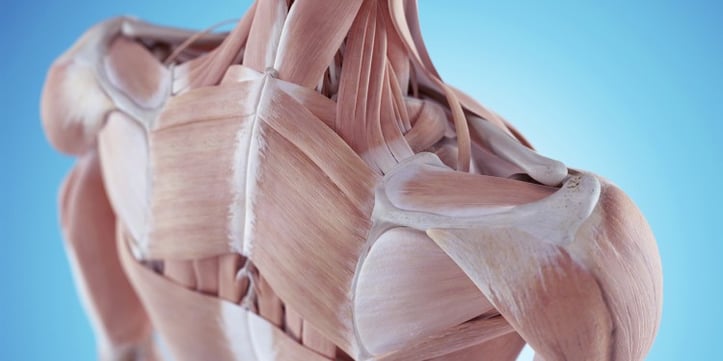
Prevent Shoulder and Rotator Cuff Injuries with Corrective Exercises
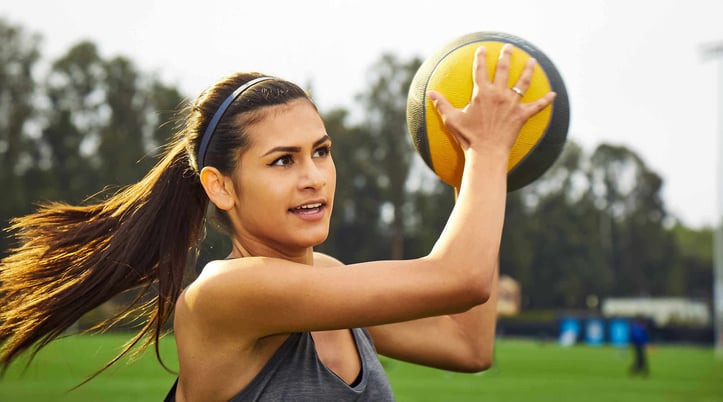
Overcome Fitness Plateaus: 4 Tips for Success

10 x 10 Thanksgiving Day Circuit: A Fitness Guide
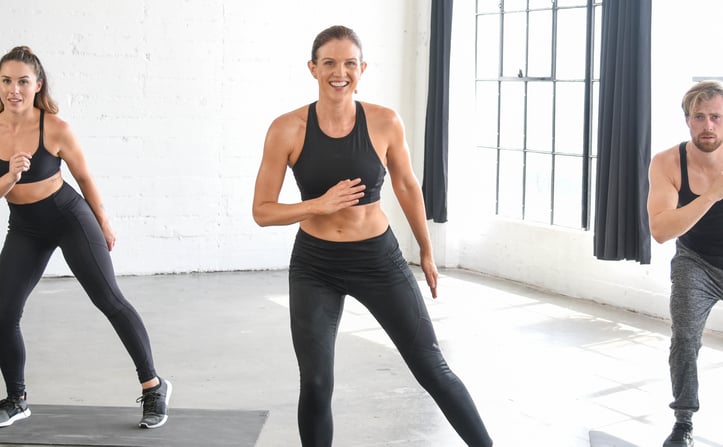
Unleash Your Fitness Potential with Kit Rich's Training Secrets
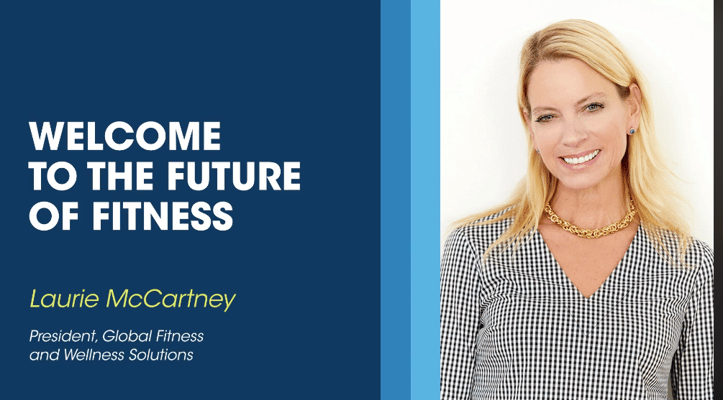
The Future of Fitness: A Guide for Beginners to Intermediates
